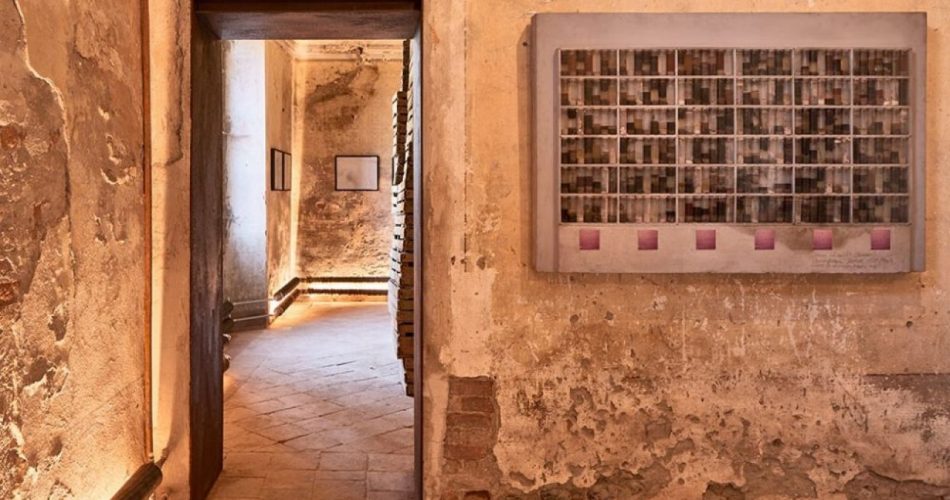A place where sustainability meets design and History
This time it’s not Japan or some other Eastern country where they are famous for their attitude to turn bizarre things into something funny. That’s what happened with the Tokyo Poop Museum or the Poop Cafe in South Korea for example. This time we are talking about Italy, though, and specifically of a little village near Piacenza (Emilia-Romagna), called Castelbosco, where a farmer with a passion for art converted a 14th-century castle into a museum called “Museo della merda” (museum of shit).
The farmer is Gianantonio Locatelli who opened his museum in 2015 along with the architect Luca Cipelletti who restored the ground floor of the medieval structure into 9 thematic rooms featuring installations from various artists including Carlo Valsecchi, Daniel Spoerri, and Claudio Costa.
His farm has been producing 50 tons of milk for the production of the famous Italian cheese Grana Padano but cows produce equally dung. So, he conceived a sustainable project for the disposal of manure transforming it into biofuel which can generate 3 MW per hour.
However, sustainability is not all. Design and art are also the protagonists of the museum since Locatelli is a lover of the latter. He chose artists from the 70s to interpret the museum’s project, including David Tremlett, famous for his geometrical and colorful compositions but we can’t forget to mention Roberto Coda Zabetta‘s work named Extrasolar System, a polyptych in 8 works, each representing the percentage of methane released from each planet in the solar system. Abstract paintings in form and material in substance; composed of a great chromatic variety based on liquid manure.

Nature, art, and technology melt perfectly together. Each room shows how many things you can make with dung.
In addition, Locatelli patented the “merdacotta” (blending the Italian words for “shit” and “terracotta”), a type of clay created by heating dung at more than 1,000 °C. In the first room, you can see tables, chairs, and vases made with this material.

There’s also something about history in another room decorated with giant vats full of “digestors” produced in Castelbosco. On each vat, there’s a label written in Latin. They are taken from an encyclopedic work called Naturalis Historia written by Plinio Il Vecchio in which he describes, by the way, some recipes and decoctions using dung.

In ancient times, dung was used as a building material because it was easily accessible and malleable. And some walls of the museum also have dung used as plaster to give a rustic and consistent look to the subject. In addition, in the center of a room, there’s a reproduction of a hut, with walls made of bricks from straw and dried dung and a roof made of bundles.

In the same room, you can find two of Claudio Costa‘s works that analyze different tribes and their work tools.
Sustainability also meets light in a special room where you can admire an amazing phenomenon of bacteria genetically modified and fed with methane gas generating soft light flows through a process of bioluminescence. This approach is based on the principle of transformation of matter in which the production of methane gas is provided from the ecological conversion of wet household waste.

Another room is dedicated to the dung beetle which is also the museum logo. This insect was very important for the Egyptian civilization because related to the rebirth and immortality of the Sun. In nature, the dung beetle is equally important because it cleans the dung surface from the development of parasites, and by digging, it increases the porosity of the soil favoring the infiltration of water.

There’s also a room with 22 photos taken by Luigi Ghirri which are part of the project Alfabeto by Claudio Parmiggiani: all images have been taken from the Lazzaro Spallanzani’s collection (a naturalist and biologist of the 18th century) housed at the Civic Museums of Reggio Emilia, a sort of “museum within a museum” and a tribute to the founder of experimental biology.
The museum also has a “shit shop” where you can buy cups, vases, fertilizer, etc… Anyway, you can visit the website for further information.
